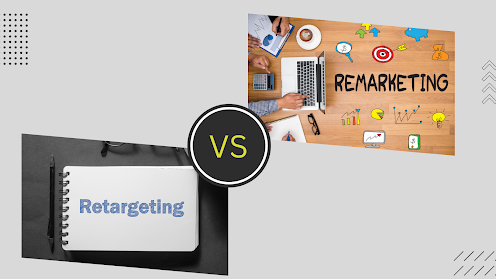Remarketing vs Retargeting: Which is Better for Marketing
Remarketing and retargeting
are two terms that many PPC advertisers interchange. But if you want to apply
either of these tactics effectively, you need to be aware of how they differ
from one another.
Remarketing vs retargeting
This was one of the questions
we covered in a recent guide to Google Ads remarketing. The key distinction
between retargeting and remarketing is:
·
Retargeting largely makes use
of paid advertisements to re-engage website or social media profile visitors.
·
Remarketing largely makes use
of email to re-engage previous clients who have already used your brand's
services.
·
Retargeting's primary focus in
terms of marketing objectives is luring website users back to it so they can
convert. Keep in mind that while the best-performing campaigns often reach a
maximum conversion rate of around 9%, the average PPC conversion rate is less
than 4%.
Regardless of how you measure it, the majority (90+%) of the traffic you pay a lot of money for won't convert on the first visit. With retargeting, you have the opportunity to convert them, increase your PPC ROI, and bring them back.
Remarketing strategies now focus more on re-engaging your current consumers to maintain their interest in your brand, motivate them to make more purchases, and increase customer lifetime value.
The interchangeable use of the two terms contributes to the widespread misunderstanding of this topic in the PPC community. Remarketing (also known as retargeting) is a term that appears in the bulk of the articles I've seen about it, most of which are written by seasoned advertising.
Advertising networks like Google Ads, which mix up the terminology, do not help the confusion. Here’s an extract from the Google Ads Help website, entitled About remarketing:
·
Standard remarketing: Display
ads to previous visitors as they browse Display Network websites and apps.
·
Dynamic remarketing: Improve
your outcomes with dynamic remarketing, which elevates remarketing by showing
advertising for goods or services that customers have already visited on your
website or app.
·
Remarketing lists for search
advertisements: After a person leaves your website and conducts a subsequent
search on Google for what they need, you can show them ads.
·
Show advertising to viewers
who have interacted with your films or YouTube channel while they use YouTube
and browse Display Network videos, websites, and apps. This is known as "digital
remarketing."
·
The simple assumption is that
remarketing and retargeting are essentially the same thing if you follow
Google's guidance. After all, Google describes retargeting and refers to it as
remarketing, which implies that the terms are interchangeable.
Although it may sound petty, there are differences between remarketing and retargeting that go beyond simple nomenclature. Understanding the distinction between the two is more crucial. These strategies, as was already said, typically employ various channels and, more significantly, they have various objectives.




Comments
Post a Comment